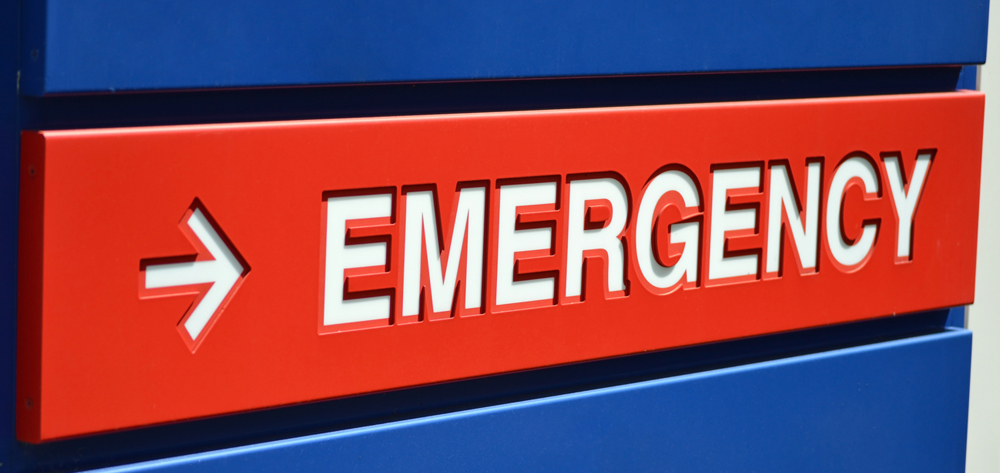In the midst of unprecedented change in health care, hospitals and emergency departments (EDs) are attempting the impossible — increase both patient volume and satisfaction without increasing the budget.
My hospital is a busy 329-bed, county-owned facility in southern Indiana. The level-two trauma ED houses 28 beds and has a separate fast-track area with seven additional beds, but, like many other EDs in the United States, we were unable to quickly accommodate the unpredictable surges in patient flow.
We needed to address the problems of longer wait times, safety issues and unhappy customers. As an innovative solution, our ED director, physicians, nurse practitioners, and nursing staff came together to launch a program that changed how we used our time and space; we went vertical.
What is vertical and how does it work?
Vertical is an operational mode that can be implemented multiple times throughout the day (or not at all) depending on patient volume. When in vertical mode, patients with lower acuity levels who have nonemergent complaints can be escorted to a recliner in a designated “results pending” area after being examined by a physician or nurse practitioner. In this area, vertical patients are monitored by a staff nurse and await discharge. This strategy frees up stretchers for more acutely ill patients in the waiting room and those arriving via ambulance.
Based on patient flow and volume, which are monitored throughout the day, when patient surges occur, the charge nurse implements the vertical mode to avoid bottlenecking at triage. Primary nurses who have empty rooms are expected to retrieve patients who have signed in for treatment and triage them at the bedside (essentially bypassing the triage department) to reduce door-to-practitioner time. As soon as medical screening is complete, patients who are appropriate for vertical care are shown to a recliner in the results pending area. This process continues until the patient surge has passed.
What is the up side of vertical mode?
The vertical mode
- expedites patient flow
- increases patient satisfaction due to shorter wait times
- frees up needed beds for more acutely ill patients
- increases patient safety as a result of shorter door-to-practitioner time
- decreases the number of patients who leave without being seen
- decreases the number of ambulances diverted due to overcrowding
- relieves the frustration of bottlenecking during patient surges
- eliminates the need for costly construction or expansion
- requires only minor staffing adjustments
- reduces costs because most vertical patients can be appropriately managed by nurse practitioners.
The vertical mode can also help meet The Joint Commission standard that boarding times for patients in the ED should not exceed 4 hours.
What is the down side of vertical mode?
One challenge is that each recliner costs approximately $5,000 each. Another challenge is convincing staff members to embrace the change and exhibit the flexibility needed to implement the process, because the model requires a staff nurse to be pulled his or her their current assignment to facilitate discharges until the surge in patient volume has subsided.
Embracing change
As healthcare workers, we are consistently challenged to do more with less. Now that hospital reimbursement is so closely tied to patient satisfaction, it is more important than ever to remain versatile and open-minded. For example, the idea that long waits in the ED are inevitable is being phased out and replaced by better customer service.
As we implemented the vertical mode in our ED, we understood that it was a work in progress and anticipated the barriers that accompany all new operations. Although vertical status took only weeks to implement, there continues to be ongoing issues with personnel. Staffing shortages have inhibited our ability to use the practice as often as we would like. With our recent expansion of ED personnel and the presence of our innovative leadership and highly adaptable staff members, we hope to have vertical status fully available at all times in the near future.
Selected references
ACEP Boarding Task Force Emergency Department Crowding: High-Impact Solutions. www.acep.org/content.aspx?id=32050.
Liu S, Hamedani A, Brown, D, et al. Established and novel initiatives to reduce crowding in emergency departments. West J Emerg Med. 2013;14(2):85-9.
The Joint Commission. Patient flow through the emergency department. Dec. 19, 2012. www.jointcommission.org/assets/1/18/R3_Report_Issue_4.pdf
Wiler JL, Gentle C, Halfpenny JM, et al. optimizing emergency department front-end operations. Ann Emerg Med. 2010;55:142-60.
Sherry Evans is an emergency department nurse at Floyd Memorial Hospital and Health Services in New Albany, Indiana.


















